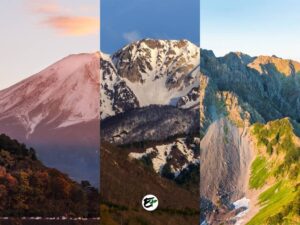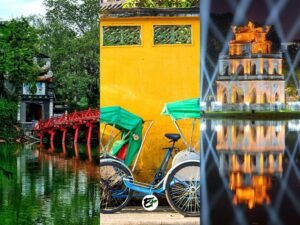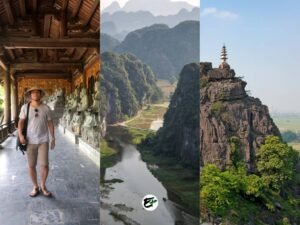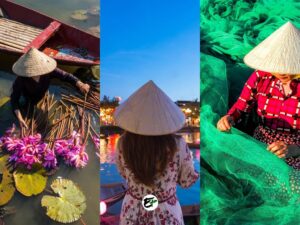10 Beautiful Places to Visit in the Taiwanese Countryside
My visit to Taiwan was a blast. The country has many beautiful features that resonated with me. From the dramatic mountain views to the peaceful scenes at its lakes, and from its colorful temples to its famous skyscrapers, Taiwan left me longing to return someday after our trip.
Motivated to revisit Taiwan, I started researching more destinations in Taiwan that might be worth exploring on my next visit. However, this time, I focused not on the top attractions, but on the lesser-known spots that could make my Taiwan trip more unique. I aimed for new discoveries, less busy attractions, and more relaxing destinations.
After some research, I found that most of these spots are located in the countryside. In this blog post, I’m going to share all the beautiful countryside destinations that I’ve discovered. Let’s go!
This post contains affiliate links. I may receive a tiny commission at no additional cost to you.
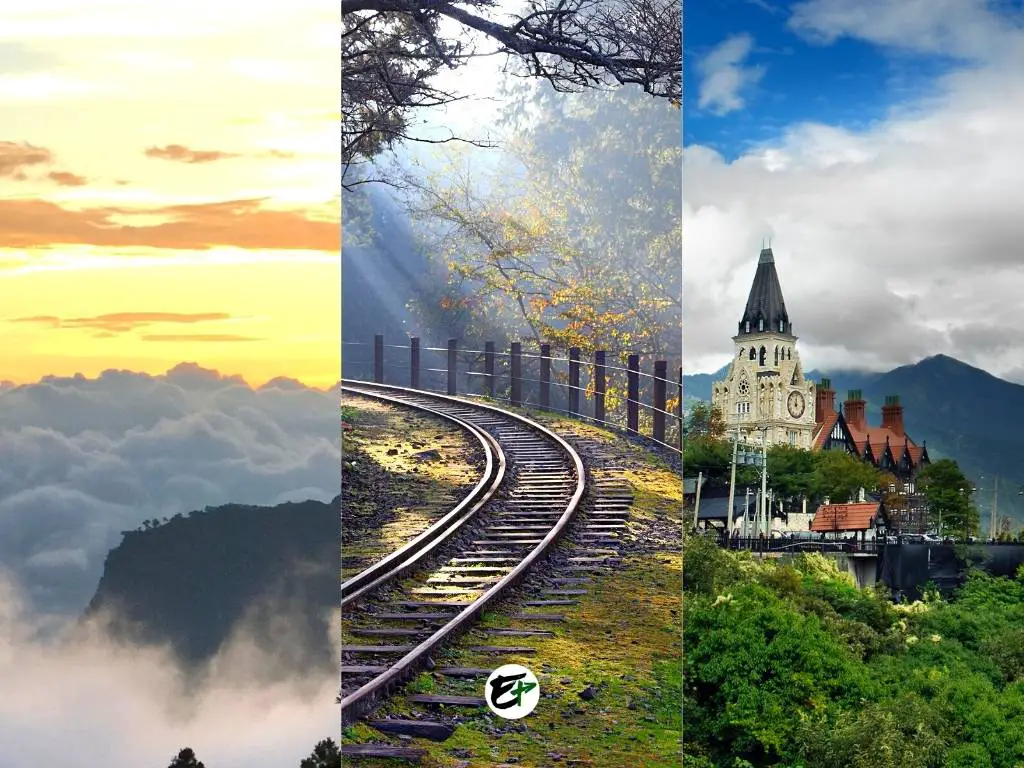
Use the table of contents to skip to topics.
Check out my other posts about Taiwan!
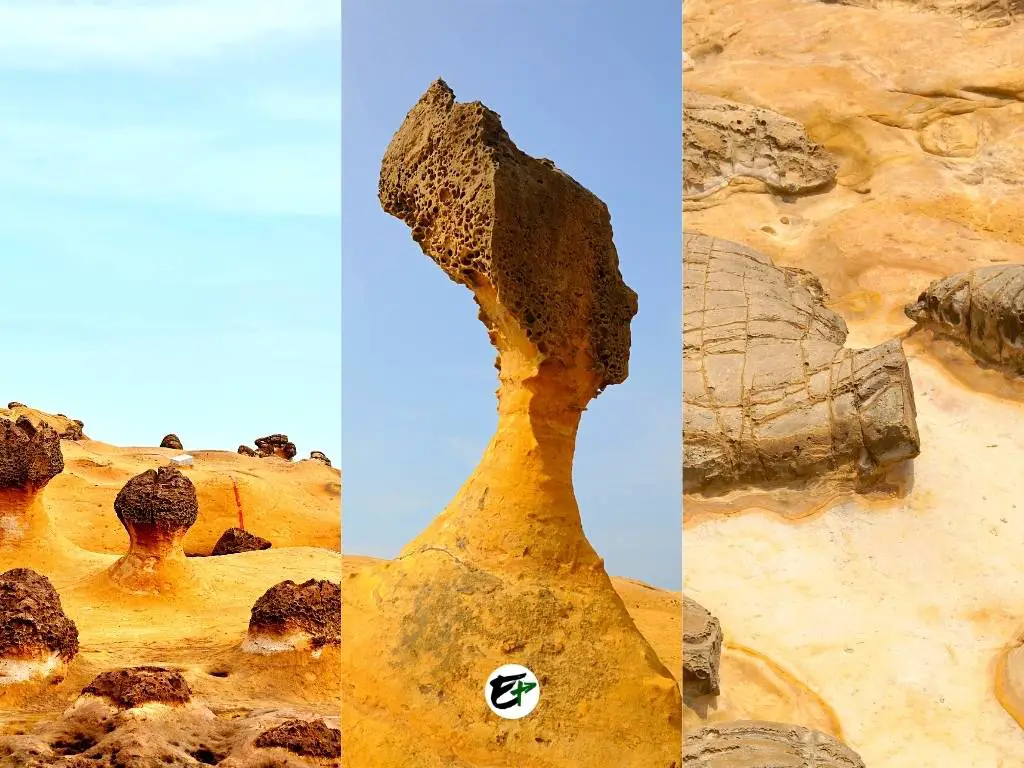


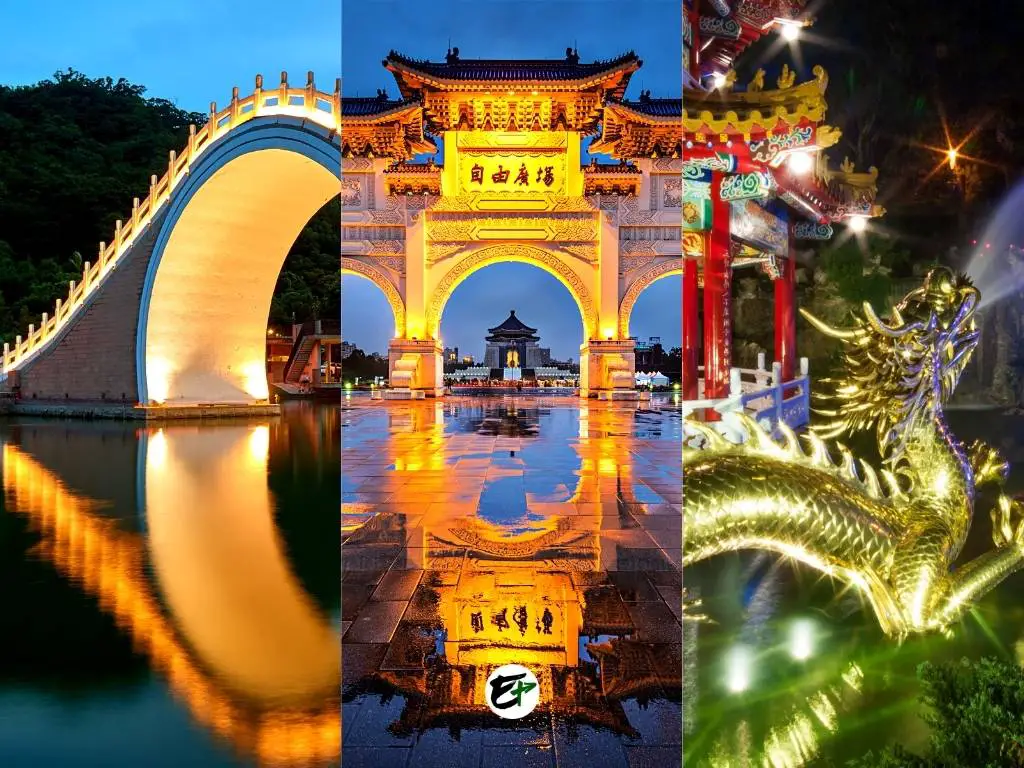

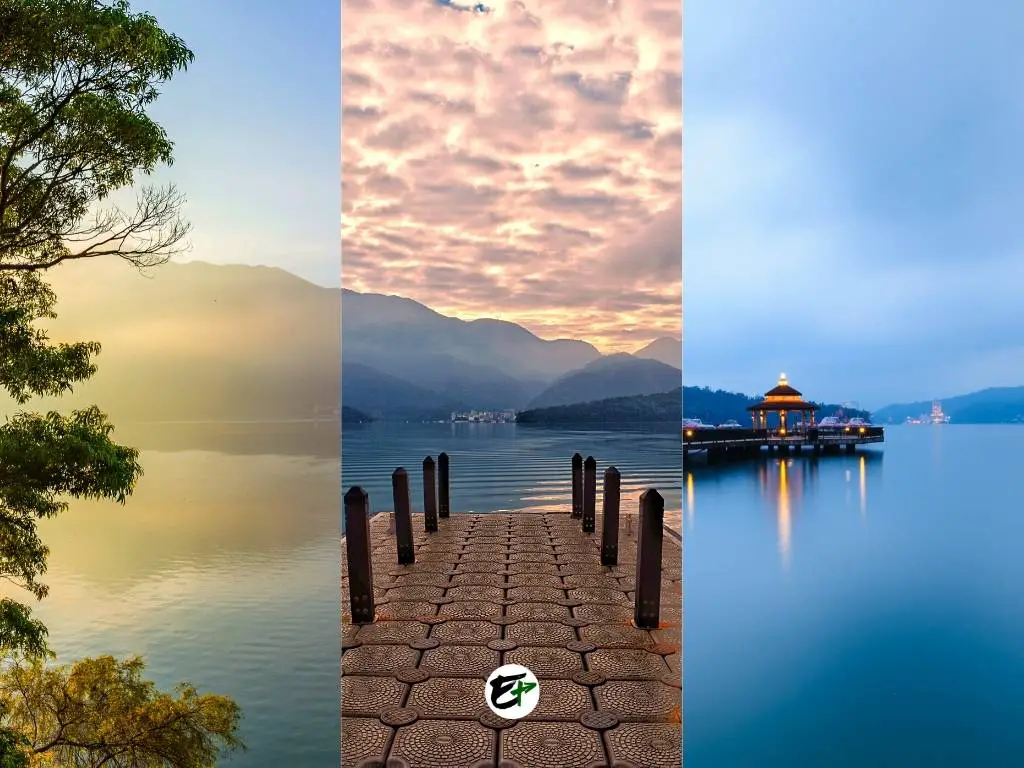
If you need assistance in exploring Taiwan, you can begin your search for guides and tours here. If you’re looking for accommodation for your trip, this site offers the best hotel deals. Alright! Enjoy reading!
Here’s something useful: I’ve included the routes, tours, and activities for each destination. This information will help you plan your itinerary when visiting the various destinations in the Taiwanese countryside. Additionally, you’ll find tips to help you get the most out of your visit.
1. Cingjing Farm
“The Mixed European and Taiwanese Countryside Destination”

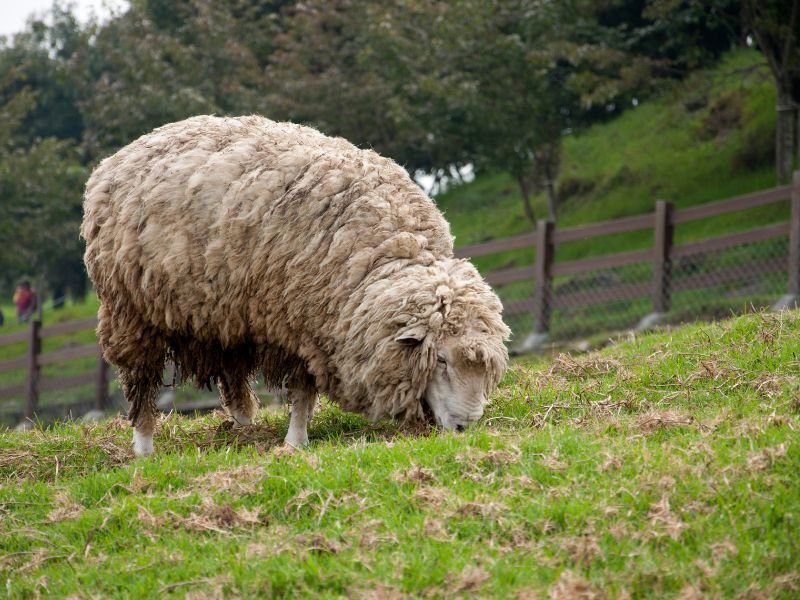
Cingjing Farm, also known as Evergreen Grassland, is a vast green pasture with a stunning mountain range in the backdrop.
Here at Cingjing Farm, visitors can see the core mountain tops of the Puli Basin, glowing slopes, and valleys. The unparalleled beauty of the natural surroundings of Cingjing Farm, its flora & fauna, and the emerald meadow will help you relax and make you forget about time.
As an Asian, what appeals to me most about Cingjing Farm is its Western vibe. The sights, the hotels, and the fields will make you feel as if you are in Europe or New Zealand. Because of this, I am thrilled at the prospect of returning to Taiwan anytime soon.
I am also somewhat excited to see the animals in Cingjing Farm that I have never seen before, such as the Aberdeen Angus cow, Barbado Sheep, Arab Horse, Corriedale lamb, and Hereford cow.
Where is Cingjing Farm?
Cingjing Farm is located in Renai Township, Nantou County. To get to Cingjing Farm from Taipei, first take the THSR to Taichung. Then, board a bus bound for Nantou. Get off at the Puli stop and switch to a bus on the Puli-Songgang or Puli-Cuifeng (Cuifong) route. Request to be dropped off at Cingjing Farm.
What to do in Cingjing Farm?
- Cingjing Farm has many trails where visitors can spend time sightseeing, enjoying incredible mountain views, and breathing fresh air. Try the Mountain View Trail, Cuihu Trail, Tea Garden Walk, Great Wall Trail, and Backgammon Ascent Trail. However, don’t miss the Sunset Trail at sunset and the Cherry Blossoms Trail in spring.
- Try the 1.2-kilometer Cingjing Skywalk, situated 1700-2000 meters above sea level. It is the longest skywalk in Taiwan, connecting the Green Green Grassland and the Cingjing Guest House.
- Feed and interact with the sheep and cows roaming around the farm or the Green Green Grasslands. Animal feed can be bought from the dispenser machines for only 50 NTD.
- Watch the sheep shearing show (New Zealand-style) at the eastern edge of the Green Green Grasslands.
- Attend the show where the shepherds lead the sheep with shepherd dogs using fascinating commands and whistles.
- Take a quick journey to Switzerland by visiting the Small Swiss Garden. Walk around the garden under trees such as the green maple, formosana, beech, elm, and deciduous pine. There are adorable sculptures, flower-lined paths, and a miniature windmill to check out too. Enjoy the LED artificial sunflowers and illuminated fountains at night, which brighten the garden.
- See the Horsemanship Show Stage, where professional equestrians and acrobats perform. There, different horses from many parts of the world present enthralling tricks and fun for all audiences.
- Teach kids to ride ponies.
For more information, please see the official website of Cingjing Farm.
2. Jiufen
“Cozy and Soulful Countryside of Taiwan”
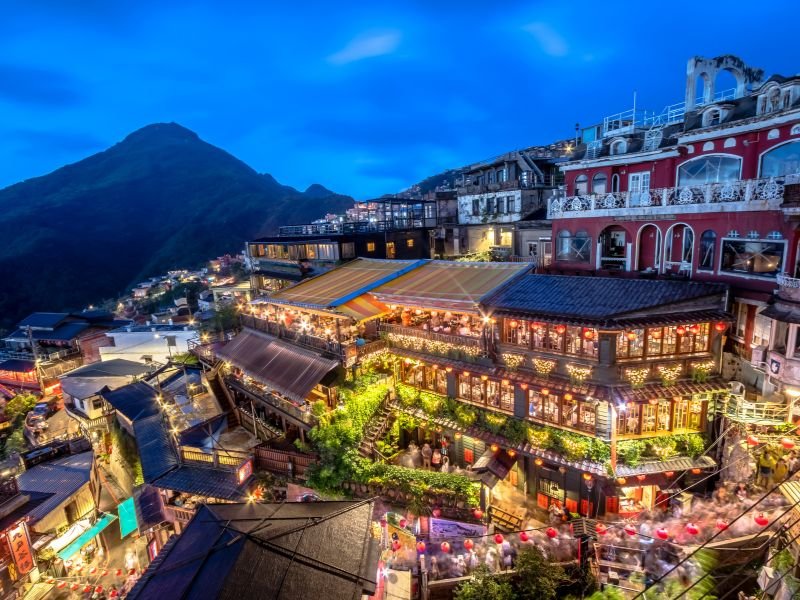
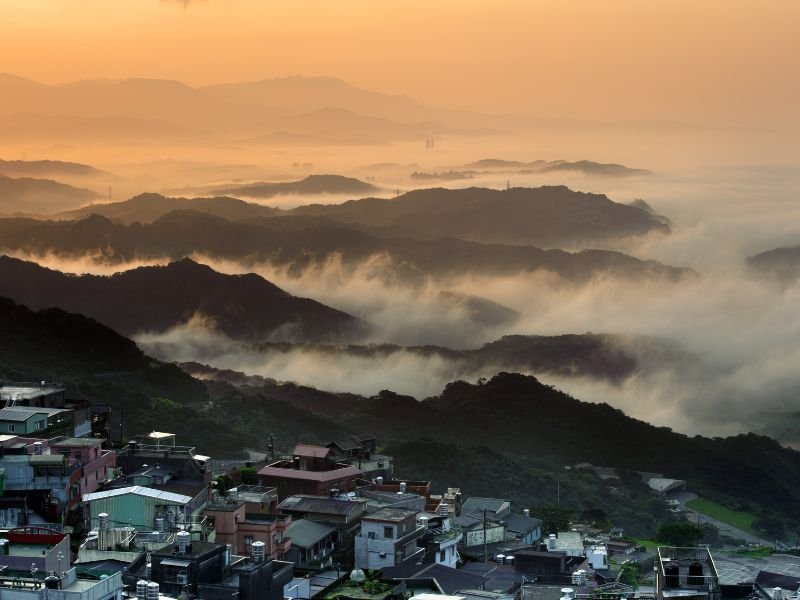
We never really planned to go to Jiufen when we visited Taiwan. I had heard it was already a mainstream destination, and many people flock to Jiufen daily. I wanted to have a peaceful getaway and avoid the crowds as well.
However, after a few weeks, my coworker also traveled to Taiwan. When he came back, he showed me his photos from Jiufen. I realized that it is a place I must visit the next time I go to Taiwan.
Jiufen is a town founded on the side of a hill, slightly inland from the Pacific Ocean. I can totally imagine the view from Jiufen, and I can already sense the awe I’ll get from it!
This town is well-known for its Bihai Mountain, Japanese-style nostalgic architecture, small alleyways in its old town, and street food treats. Jiufen’s historic downtown area, lined by two pedestrian streets: Jishan Street and Shuchi Street, is the main attraction for tourists.
With the beautiful Chinese lanterns hanging above, I know I will love the overall vibes that Jiufen has.
Where is Jiufen?
Jiufen is only an hour and a half northeast of Taipei (Ruifang District, New Taipei City). Most travelers get to Jiufen by bus. There are two routes available:
- From the Adventist Hospital bus stop on Bade Road in Taipei, wait for and take the Jiufen bus #1062.
- Take the same Jiufen #1062 bus from Zhongxiao Fuxing MRT station Exit #1 or Songshan station in Taipei.
However, since Jiufen is in the north of Taiwan, you might want to consider visiting nearby places after Jiufen to make the most of your day.
What to do in Jiufen?
- Visit downtown Jiufen (Old Street) – The district is known for its historic eateries, shops, and teahouses. It is the spot where tourists can relive the past by trying local specialties and buying handicrafts and other trinkets. The area also offers breathtaking views of the Pacific Ocean and the harbor on the shores.
- Have tea at a Traditional Teahouse while watching the sunset – Jiufen’s traditional teahouses are exceptionally atmospheric. They offer a traditional tea experience, often with stunning coastline views. It is advisable to visit one just before sunset and watch as the towns along the coast begin to light up. Many say that the night view from Jiufen is better than during the day.
- Explore Keelung Mountain – Mount Jilong, also known as Keelung Mountain, is a quick but exhausting climb that takes most people about 30 minutes to reach the summit. But along the way and at the top, you’ll get panoramic views of Jiufen’s scenery and the mountains. Hiking can be tiring, but the views are simply priceless.
- Photo Ops with Traditional Chinese Clothing – Chipao Chinese Dress Rental, located across from the Jiufen bus stops, allows for the rental of Chinese clothes to match your vibe with Jiufen’s beautiful lantern-lighted streets.
For more information, please see the official website of Taiwan/Jiufen.
3. Jinguashi
“The Countryside Destination in Taiwan Where the Mountains and Sea Meet”
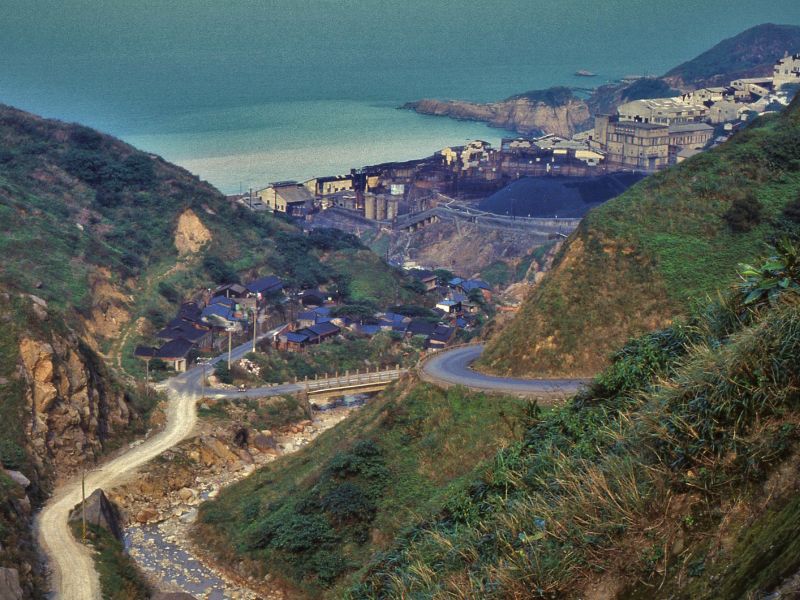

During my research, I found that the closest place to Jiufen is Jinguashih. If you walk, it’s only 30 minutes away from Jiufen’s Old Street.
Jinguashi is famous for its gold and copper mines. Like Jiufen, Jinguashi is located between mountains and coasts, offering incredibly beautiful views. The area is rich in historical artifacts from its mining days. This makes it a great place to visit in northern Taiwan.
How to go to Jinguashi
If you plan to go directly to Jinguashi, you need to take a bus that is going to Ruifang Station. Once you reach Ruifang Station, there are buses that go straight to the Gold Ecological Park in Jinguashi.
What to do in Jinguashi
- Visit the Museum of Gold. Visitors can learn about the history of gold mining in Jinguashi during Japanese rule. The parts of the museum that attract most visitors are the prison for the allied prisoners of war and the Benshan Tunnel. At the Benshan Tunnel, travelers can go underground and experience the daily lives of miners working in harsh conditions.
- Hike Teapot Mountain. Behind the Jinguashi Gold Museum is Teapot Mountain. As viewed from the direction of Jinguashi Geological Park, the peak resembles a teapot without a handle; hence, the location is also known as ‘Earless Teapot Mountain.’ Teapot Mountain reaches only around 600 meters in height. Because it is close to the north coast, travelers hiking the mountain can enjoy a breathtaking panoramic view of the ocean, coastline, and hills.
- Take a look at the Golden Waterfalls. The Huangjin Waterfall, also known as the “Golden Waterfall,” is one of Taiwan’s most unusual waterfalls. This waterfall is not only relatively wide and tall, but it also has a vein-like percolating look and vivid brownish-orange underlying rocks.
- Stroll down Qitang Old Street. In early Jinguashi, Qitang Old Street was the most prosperous and bustling street. Walking down this street is like going back in time. During its early days, many shops thrived in Qitang. It was even known as the “Little Ginza.” Now, the street has long-standing general stores with old-fashioned cigarette display cases.
- Imagine the old Japanese Shinto Shrine. It was a shrine built by a Japanese Mining Company that took over the management of the Jinguashi mine during the Japanese occupation of Taiwan. This is also known as the “Mountain God Shrine,” where many Japanese large-scale religious ceremonies and rituals were held. However, World War II destroyed the shrine, and now only pillars and gates remain.
4. Wuling Farm
“The Beautiful and Colorful Countryside of Taiwan”
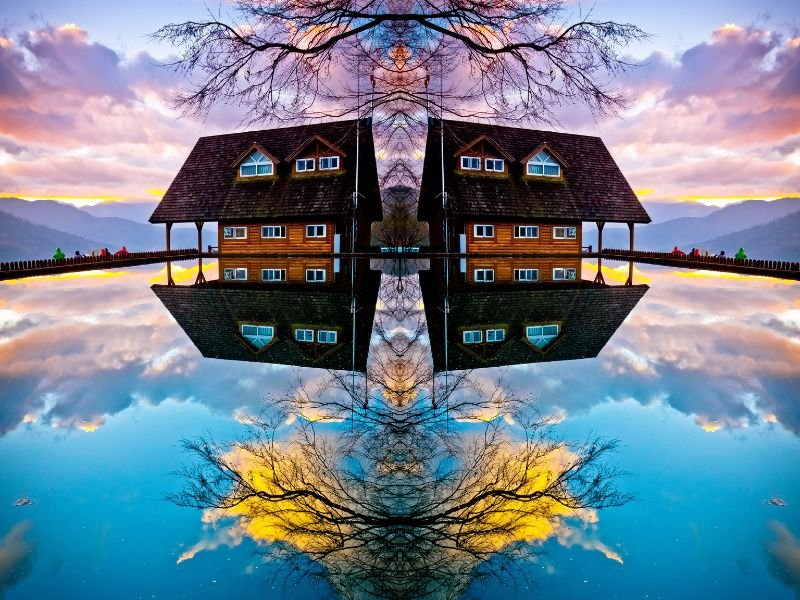
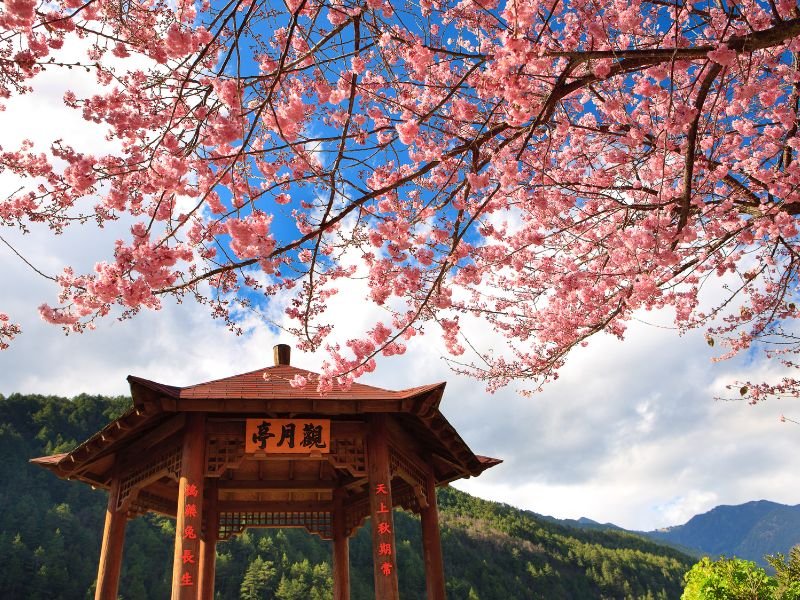
Wuling Farm is one of the places in Taiwan where people appreciate nature the most. This is due to the stunning colors of the trees and flowers that fill the views of the farm all year round. Different flowers bloom, trees change colors, and bear fruit on Wuling Farm every month. This makes Wuling Farm a beautiful and colorful countryside in Taiwan.
- In January, you can see plum blossoms, maple leaves, and wax plums.
- In February, plum blossoms and Sakura are in bloom.
- March brings peach blossoms, pear blossoms, plum blossoms, and apple blossoms.
- In April, you can still see pear blossoms, plum blossoms, and apple blossoms.
- May is the time for wisteria and roses. In June and August, peaches are in season.
- September and October bring pears, apples, camellia, sage, cosmos, and lily flowers.
- In November, you can see maple leaves and ginkgo.
- December offers maple leaves, ginkgo, plum blossoms, and wax plums.
However, the most appealing months are February and mid-November to December. This is when Sakura and maple leaves are seen everywhere on the farm. As someone who lived in a country with eternal summer, I always wished to experience the four seasons. I long to see the leaves of the trees change their colors, and the trees bloom with lovely flowers.
How to go to Wuling Farm?
Wuling Farm is located in Taichung, but it’s quite a distance from the city center. The farm is in the mountainous central region of Taiwan, situated 2000 meters above sea level. To get to Wuling Farm, you need to travel to three different TRA stations before taking a bus to the farm.
- At Fengyuan Station, board Bus 865 headed to Lishan. Once you arrive in Lishan, transfer to Bus Shuttle-2, number 866. Get off at the Wuling Farm Stop.
- If you’re at Yilan Station, take Kuo-Kuang Bus number 1751. Again, you should get off at the Wuling Farm Stop.
- From Luodong Station, hop on Kuo-Kuang Bus number 1764. Make sure to get off at the Wuling Farm Stop.
What to do in Wuling Farm?
- You can enjoy the sights of nature. Wuling Farm offers breathtaking views of the nearby mountains. There are also pleasant walks to scenic locations, such as the Taoshan Waterfall.
- Consider spending a night glamping. Wuling Farm has a camping ground where visitors can set up camp and make campfires. This could be a great way to bond when traveling with family or a group of friends.
- Take some time to relax with tea. Wuling Farm has a tea garden and a Tea Village. Here, you can enjoy a warm cup of homemade tea.
For more information, here is the official website of Wuling Farm.
5. Gaomei Wetlands
“Instagrammable countryside of Taiwan“
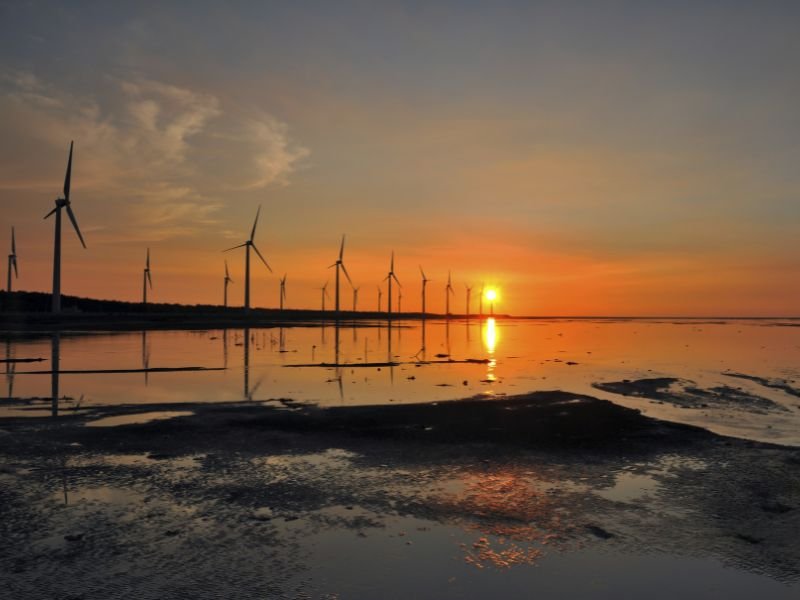
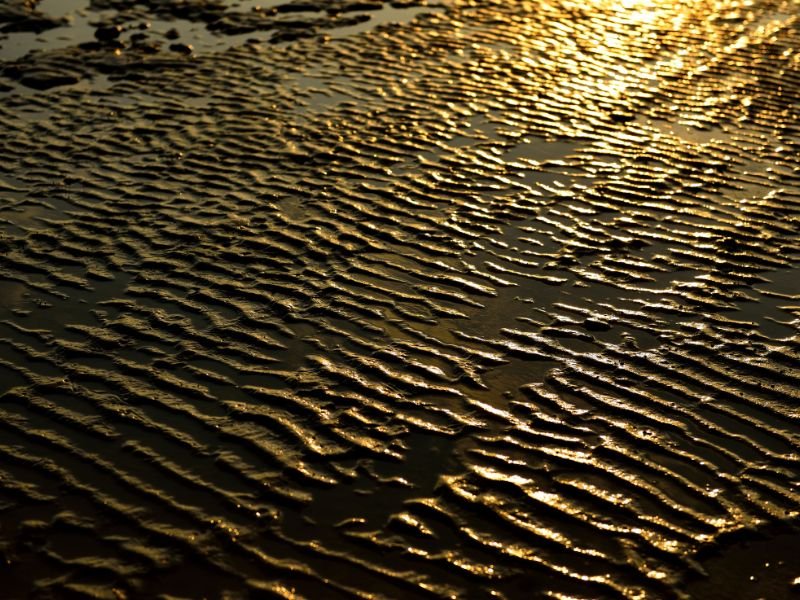
This is the spot in Taiwan where you can take beautiful mirror shots of windmills. It was one of the places on our list, but we failed to visit it. We miscalculated the time, so I just included it in my future destinations in Taiwan.
Many say the best time to visit Gaomei Wetlands is in the late afternoon when visitors can enjoy the sea breeze and watch the sun slip below the horizon. Well, I agree! Based on the photos I’ve seen, it could be one of the best sunset-watching spots in Taiwan.
How to go to Gaomei Wetlands
The Gaomei Wetlands are located in the Qingshui District in Taichung. They are only an hour and 10 minutes away from the city center of Taichung by bus. The wetlands are situated at the mouth of the Dajia River and cover over 300 hectares of grassy, mossy, and muddy flat land.
To get there, you need to take Bus #309 from Taichung Station and get off at the Gaomei Wetlands at the No. 18 windmill station. Since the morning and noontime aren’t the best times to visit the Gaomei Wetlands, it’s a good idea to first travel to the Rainbow Village or Miyahara before heading to the wetlands.
What to do in Gaomei Wetlands?
If you plan to visit Gaomei Wetlands, not just for the sunset, here are some activities you can do:
- You can rent an e-bike. There are electric bike rental shops south of the visitor center where you can rent e-bikes for an hour to explore the area. An hour of e-bike ride costs only 150 to 200 NTD.
- You can watch animals in the wetlands. During low tide, you can see water species such as mudskippers, fiddler crabs, and other crustaceans crawling around. In some seasons, migratory birds flock to the area. It’s fun to watch them, especially when they are hunting for their prey.
- You can also photograph the windmills. The Gaomei Wetlands have saltwater, which tends to be more reflective and acts like a mirror. This provides a great photo opportunity for those who love to post on Instagram.
For more information, please check the official website of Gaomei Wetlands.
6. Taijiang National Park
“The Undiscovered Taiwanese Countryside Destination”
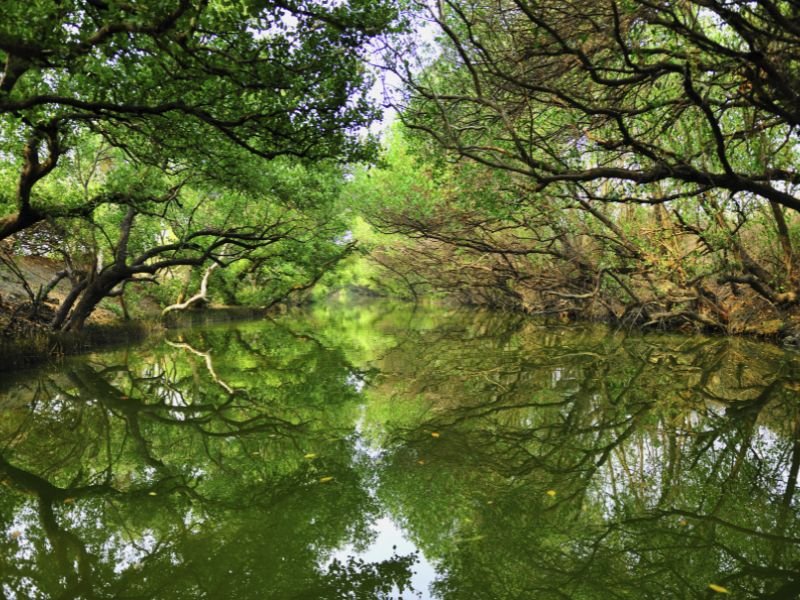

The main reason I like traveling to the countryside is the beautiful natural scenery that fills me with awe. When I was looking for more destinations in Taiwan, I saw a photo of the Mangrove Green Tunnel from Taijiang National Park, and I was instantly captivated. It is now a place that I really aspire to visit.
Taijiang National Park is the eighth and youngest national park in Taiwan. The park encompasses 50 square kilometers of land and 340 square kilometers of water in the coastal lands north of Anping Harbour. Here, visitors can see lagoons, tidal flats, mangrove swamps, and wetlands that are home to rare fish, crustaceans, and other animal and bird species, including the endangered black-faced spoonbill.
How to go to Taijiang National Park?
Taijiang National Park is located in Tainan City on the southwest coast of Taiwan.
To get there, you need to first reach TRA Tainan Station. Here, you can find Tainan City Bus #2 or #88. Board either of these two buses and get off at the Tourist Fish Market.
Alternatively, you can take the bus with the #99 Anping to Taijiang Route from TRA Tainan Station. Then, get off at either the Taijiang National Park Headquarters stop or the Sihcao Ecological & Cultural Area stop.
What to do in Taijiang National Park?
- You can explore the park using a bike. Cycling is a great activity in Taijiang because the climate is sunny for most of the year in southern Taiwan. The bike trails are mostly flat, so cycling won’t require much effort and won’t tire you out.
- You can also cruise along the green tunnel. This involves drifting along a river in a mangrove swamp, surrounded by the beautiful scenery of canopy trees above.
- Take a stroll at Anping Old Street. This street, founded by the Dutch, is Taiwan’s oldest. It’s filled with stalls, shops, and a maze of alleyways.
- Finally, you can explore the Anping Old Fort. This 17th-century stronghold, now a museum, is a place to learn about the history of the Dutch occupation. You can see artifacts like old weapons, uniforms, and sketches of historic ships.
Here’s the official website of Taijiang National Park to learn more.
7. Liyu Lake
“Peaceful Lake of Taiwan Countryside”
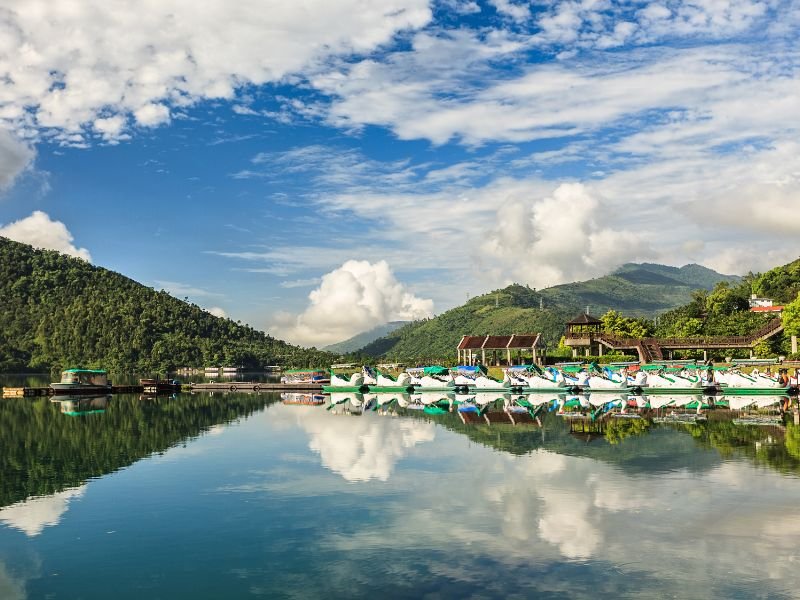
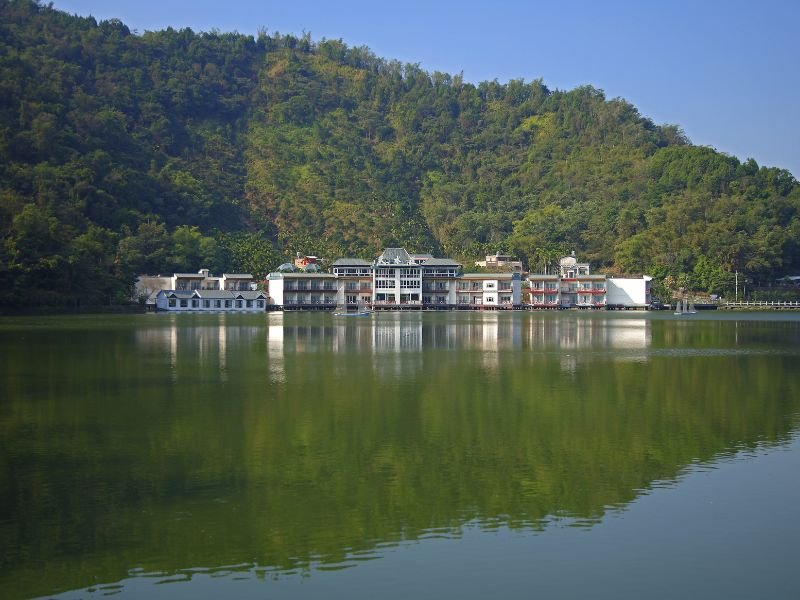
To me, Liyu Lake is a smaller version of Sun Moon Lake. It is situated at a higher altitude and is surrounded by majestic mountains, much like its larger counterpart. It also has a 4-kilometer bicycle path encircling the lake!
However, Liyu Lake seems more serene because it is less well-known, and fewer tourists visit the lake. This lake is also known as Carp Lake due to the abundance of carp in its 104-hectare waters. It is also the largest freshwater lake in Hualien.
Around the lake, visitors can see statues of Buddha, large Koi Carps, and other animals. There are also food stalls and BBQ stands. Based on its appearance and reviews, Liyu Lake seems to be a good camping site, offering visitors an authentic countryside feel.
But above all, what attracts me the most are the picturesque views of the lake and the mountains. I appreciate how tranquil it looks and how refreshing it seems.
How to go to Liyu Lake
Liyu Lake is located in the Shoufeng Township of Hualien County. It’s about 18 kilometers from Hualien City.
Visiting Liyu Lake is straightforward. Start by getting to Hualien Train Station. From there, transfer to Hualien bus 1139, which heads south. Get off at the Liyu Lake Visitor Center.
What to do in Liyu Lake
- You can have a picnic by the lake. The Visitor Center has barbeque stands, food stalls, and picnic tables.
- You can also enjoy water sports. The visitor center rents out paddle boats, kayaks, and motorboats.
- Cycling is a popular activity in the area. The visitor center allows visitors of all ages to rent bikes for just 100 to 200 NTD.
- Take a stroll around the lake. The pathway around the lake is four kilometers long and takes about an hour to walk. Reviews suggest that with the incredible views of nature at Liyu Lake, you won’t even feel tired after such a long walk.
- In some seasons, around April, you can watch fireflies at night. They roam around the lake, giving it a magical appearance.
For more information, check out the official website of Liyu Lake.
8. Meinong
“The Unique Countryside in Southern Taiwan”
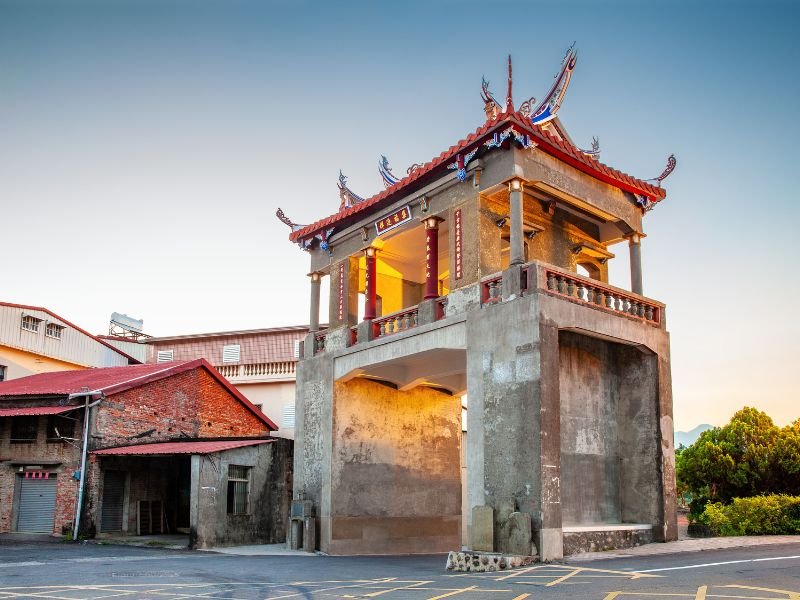
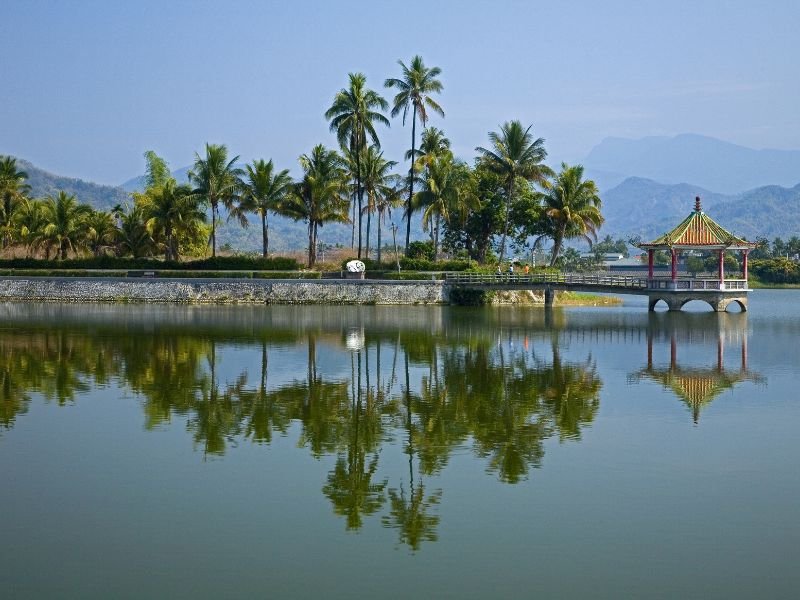
Taiwan is known for its rich culture and that inspires me to back to Taiwan. I have experienced two distinct cultures in Taiwan. One in Taroko and the other in Thao Village at Sun Moon Lake. And I want more!
Next on my list is the Hakka Culture in Kaohsiung City, located in southern Taiwan. Hakka translates to “guest families” in English. The Hakka People, who speak the Hakka language, practice this culture. They belong to a subgroup of Han Chinese. Their roots trace back to the Hakka-speaking provinces of China such as Guangdong, Fujian, Jiangxi, Guangxi, Sichuan, Hunan, Zhejiang, Hainan, and Guizhou.
Over the centuries, they have migrated to various parts of Asia, including Taiwan. It’s evident that Hakka culture flourishes in Taiwan, especially in a district named Meinong. Here, the Hakka people live in harmony with nature, produce stunning artworks, and prepare tasty dishes.
The vibrant culture, simplicity, and sincerity of the Hakka People have earned Meinong the title of Taiwan’s “Land of Smiles”.
How to go to Meinong?
Meinong is a place situated 45 kilometers to the east of Kaohsiung City. If you plan to visit, you need to start from either the Zuoying THSR Station or the Kaohsiung TRA Station. At these stations, you can find a bus that goes to Meinong. You should get off the bus at Meinong station.
What to do in Meinong?
- You can visit Turn Red Nature Life for a taste of traditional Taiwanese farming. Here, visitors can learn to make their own scarecrows and create ornaments by weaving straws and braiding wires. It’s a great place to experience rural life in Taiwan.
- Don’t miss out on the local food. Try famous Hakka dishes in Meinong such as stuffed bitter gourd, salt-baked chicken, stuffed tofu, and beef ball soup.
- Take a stroll down the old street of Meinong. This neighborhood is filled with old traditional buildings. It’s a great place to experience life from past centuries.
- Feeling creative? Visit Mr. Lee Ming-Hsiang’s store and paint paper umbrellas. The craft of making oil-paper umbrellas is a significant part of the Hakka marriage tradition, which you can experience in Meinong.
- If you’re a nature lover, Meinong Lake is the place to be. Enjoy the scenery, take photographs, bike around, and watch birds. The lake offers many leisure activities, including fishing.
Learn more about Hakka Town and Meinong (official website)
9. Penghu
“The Idyllic Island Countryside of Taiwan”
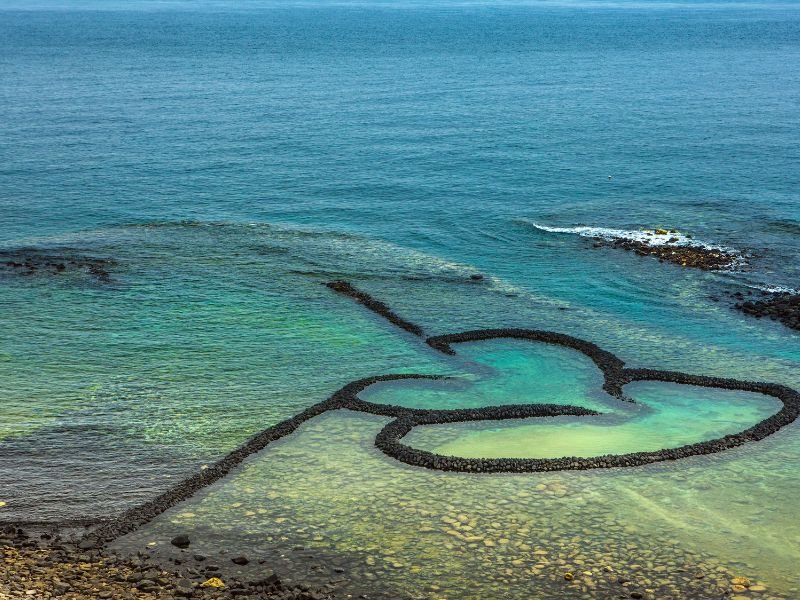
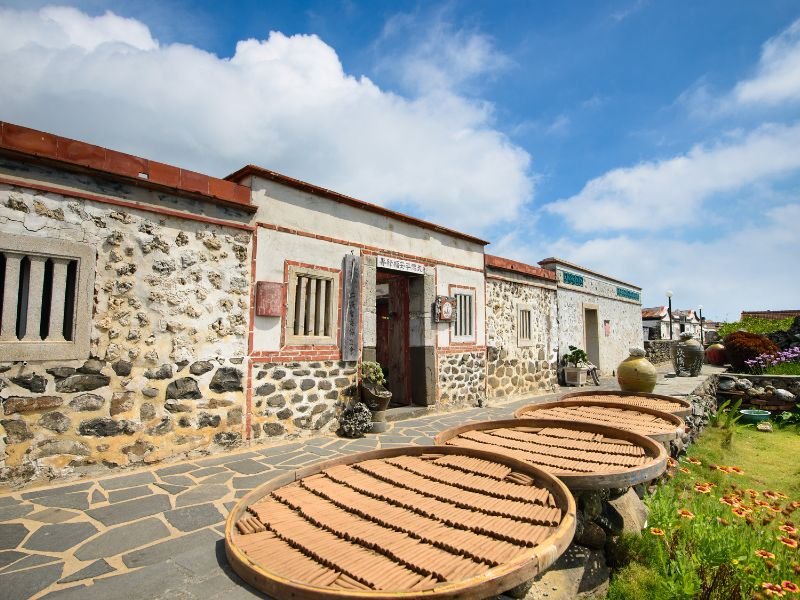
If there is one place in Taiwan that is truly in the countryside, it would be Penghu. Also known as the Pescadores Islands, it’s a small archipelago composed of 90 islands and islets in the Taiwan Strait.
What interests me greatly about this Taiwanese countryside? It’s the Erkan Old Village, built from stones and corals. It’s quite unusual to see East Asian houses made from these materials.
Moreover, I’m curious to see a Chinese or Taiwanese town in the middle of the sea because they are typically located inland and in the highlands. However, it’s not just the houses that await us there.
In the photos I saw on the internet, there are beaches, sea caves, temples, and another fascinating old street in Penghu to explore as well. I bet this is going to be a truly unique experience in Taiwan.
How to go to Penghu?
Penghu is situated to the west of Taiwan’s main island. You have two options to get there: by plane or by ferry.
Several airports offer flights to and from Penghu. These include TPE Songshan, Taichung, Chiayi, Tainan, Kaohsiung, and Kinmen.
If you prefer a sea journey, you can take a ferry from the ports in Kaohsiung or Chiayi. These ports provide trips that will take you to Penghu.
What to do in Penghu?
- Take a walk through Zhongyang Old Street. This historic street is in Magong City, the only city in Penghu. Here, visitors can discover stores selling local delicacies, traditional tea houses, and various other shops.
- Head to the beach. Penghu is known for its crystal clear blue waters and white sand beaches. Visitors can swim, snorkel, sunbathe, or rent a banana boat for a fun ride on the waves.
- Check out the rocks on the shores and islands. Penghu offers geological sites to explore, such as the sea erosion in Whale Cave and the Twin Heart Stone Weir.
- Visit Erkan Village. Here, you can see century-old residences built from rocks and corals. These houses have a unique look, different from traditional Chinese houses.
Learn more from the official website of Penghu.
10. Alishan
“The Heavenly Taiwanese Mountain Countryside”
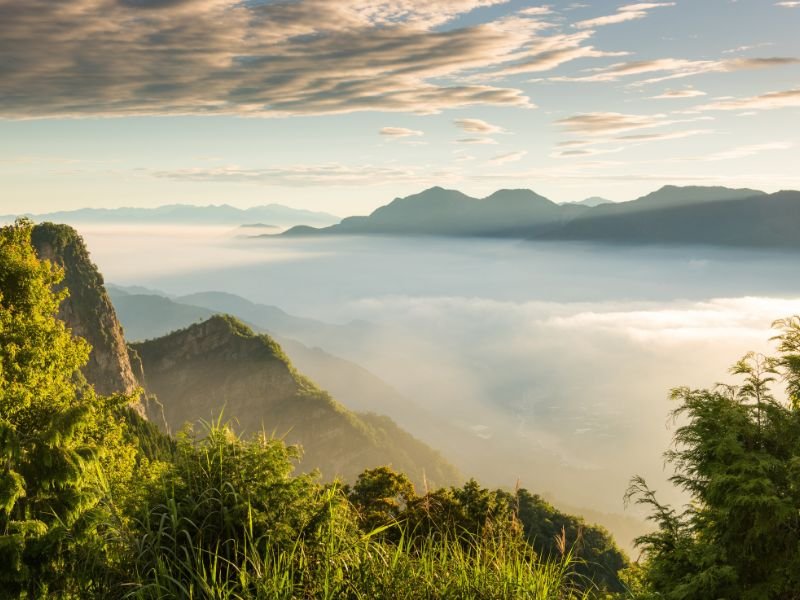
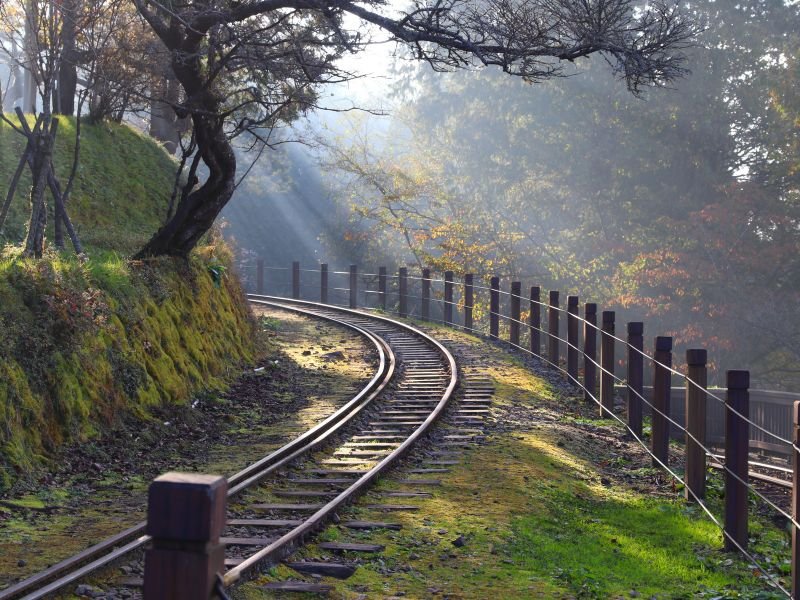
Alishan is a beautiful mountaintop destination in the mountainous central regions of Taiwan. On our trip to Taiwan, Alishan was supposed to be our next destination after Sun Moon Lake. However, time did not permit us, so now I’m including it on my bucket list of countryside destinations in Taiwan.
To tell you honestly, I really wanted to go to Alishan mainly because I want to experience the heavenly phenomenon that occurs there, the sea of clouds.
Another reason is that Alishan has a gorgeous forest, through which an old-looking but charming train passes. It takes anyone who sees it back in time to the first industrial revolution. Lastly, I just love hanging around the forest. It’s so refreshing and soothing.
How to go to Alishan?
Alishan, also known as The Alishan National Scenic Area, is a mountain resort and nature reserve. It’s located in Alishan Township, Chiayi County, Taiwan.
If you’re looking for the quickest way to get to Alishan, you can take buses #7322C or #7322D. These buses depart from Chiayi Train Station.
What to do in Alishan?
- Start with a ride on the Alishan Forest Railway. This scenic train journey takes you through a lush forest that transforms into a haven of cherry blossoms in the spring.
- Don’t miss the chance to witness a stunning mountain sunrise. On clear days, you can enjoy a glorious morning view of a sea of clouds, making the mountain peaks look like islands above the clouds.
- Spend some quiet time at the sister ponds in the Alishan Forest Recreation Area. These two ponds offer a serene spot for visitors to connect with nature and rejuvenate.
- Take a forest bath on the Giant Tree Plank Trail. Here, you can see trees that are over 2000 years old and stand more than 40 meters tall.
Discover more from Alishan’s official website.
Save it on Pinterest.




